Publications
-1.tmb-th600x450.jpg?Culture=en&sfvrsn=21527039_1)
Libya: Humanitarian Response Plan 2021
03/2021
Continued conflict, the blockade of the oil sector for most of 2020, and the coronavirus disease 2019 pandemic have further debilitated the already weak economic situation in Libya.
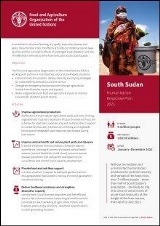
South Sudan: Humanitarian Response Plan 2021
03/2021
A combination of severe flooding, dry spells, insecurity, disease and pests, the economic crisis, the effects of COVID-19, limited access to basic services and the cumulative effects of prolonged asset depletion and loss of livelihoods continues to drive food insecurity across South Sudan.
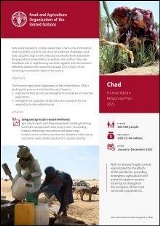
Chad: Humanitarian Response Plan 2021
03/2021
Particularly exposed to climate-related risks, Chad is one of the world’s most vulnerable countries. Structural development challenges, weak local capacities, high poverty rates and successive shocks exacerbate the population’s vulnerabilities. In addition, the conflict in the Lake Chad Basin and in neighbouring countries, together with the economic difficulties linked to the coronavirus disease 2019 (COVID-19) are increasing humanitarian needs in the country.
![1_Appeal 2021_Ukraine[2]-1](/images/devemergencylibraries/publications-import/1_appeal-2021_ukraine-2--1.tmb-th600x450.jpg?Culture=en&sfvrsn=e3ab01ad_1)
Ukraine: Humanitarian Response Plan 2021
03/2021
Now in its seventh year, the conflict in eastern Ukraine continues to impact the food security and livelihoods of more than a million people, particularly women, children, the elderly and people with disabilities.
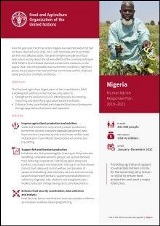
Nigeria: Humanitarian Response Plan 2021
03/2021
Over the past year, food insecurity in Nigeria has reached levels that had not been observed since 2016–2017, with Adamawa, Borno and Yobe still the most affected states.
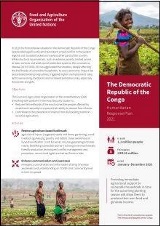
Democratic Republic of the Congo: Humanitarian Response Plan 2021
03/2021
In 2020, the humanitarian situation in the Democratic Republic of the Congo deteriorated significantly amid persistent armed conflict in the eastern regions and increased violence in several other parts of the country.

Venezuela: Humanitarian Response Plan 2021
03/2021
Venezuela (Bolivarian Republic of) is among the world’s ten largest food crises, with over 30 percent of the population facing various levels of food insecurity.
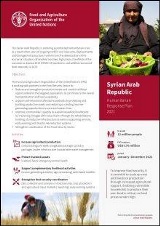
Syria: Humanitarian Response Plan 2021
03/2021
The Syrian Arab Republic is enduring a protracted humanitarian crisis as a result of ten years of ongoing conflict and insecurity, displacements and damaged infrastructure. To improve food security, it is essential to scale up crop and livestock production through increased agricultural support. Enabling vulnerable households to produce their own food is critical, as food prices remain high.
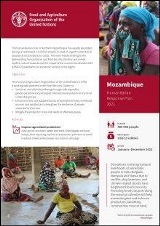
Mozambique: Humanitarian Response Plan 2021
03/2021
The humanitarian crisis in Northern Mozambique has rapidly escalated, leaving an estimated 1.3 million people in need of urgent humanitarian assistance and protection in 2021.

Zimbabwe: Humanitarian Response Plan 2021
03/2021
The humanitarian situation in Zimbabwe is fragile and requires close, continued attention. Widespread food insecurity is largely a result of shocks and stressors including recurrent drought, the effects of the coronavirus disease 2019 (COVID-19) pandemic, pests and diseases and rising food prices.
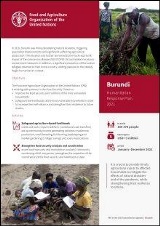
Burundi: Humanitarian Response Plan 2021
03/2021
In 2020, Burundi was hit by devastating natural disasters, triggering population displacements and significantly affecting agricultural production.
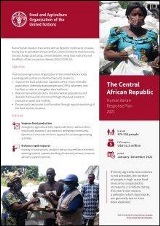
Central African Republic: Humanitarian Response Plan 2021
03/2021
Humanitarian needs in the Central African Republic continue to increase, mainly due to persistent armed conflict, violence linked to transhumance, floods, plant pests, animal diseases and the effects of the coronavirus disease 2019 (COVID-19). If timely agricultural assistance is not provided, the number of people in high acute food insecurity is expected to increase to 2.3 million during this year’s lean season, a period in which food stocks are generally low or have been depleted.
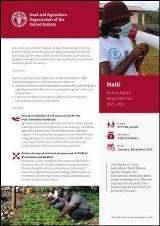
Haiti: Humanitarian Response Plan 2021
03/2021
Civil unrest and economic instability in Haiti combined with recurring shocks linked to natural disasters (droughts, earthquakes, floods and hurricanes) and the effects of the coronavirus disease 2019 (COVID-19) pandemic have led to increased food insecurity and other humanitarian needs throughout the country.
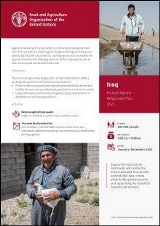
Iraq: Humanitarian Response Plan 2021
03/2021
Against a backdrop of cyclical violence, protracted displacement and economic uncertainty, Iraq’s fragility has grown during the coronavirus disease 2019 (COVID-19) pandemic.
-1.tmb-th600x450.jpg?Culture=en&sfvrsn=fd20aeef_1)
FAO in the 2021 humanitarian appeals
03/2021
Levels of acute hunger soared throughout 2020, with the total number of people experiencing crisis or worse levels of acute food insecurity globally expected to far exceed 2019’s already staggeringly high figure of 135 million people.
![1_Appeal 2021_Afghanistan_updated[1]-1](/images/devemergencylibraries/publications-import/1_appeal-2021_afghanistan_updated-1--1.tmb-th600x450.jpg?Culture=en&sfvrsn=892a92f1_1)
Afghanistan: Humanitarian Response Plan 2021
03/2021
Four decades of conflict, recurrent natural disasters (most notably droughts and floods) and limited capacity to cope with climate-related shocks have caused massive population displacements and left millions of people in acute food insecurity. FAO is requesting USD 50 million to assist 3.5 million people to improve their food security and livelihoods.
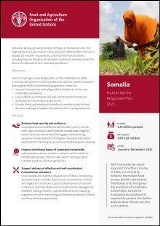
Somalia: Humanitarian Response Plan 2021
03/2021
Somalia is facing a growing number of threats to its food security. The ongoing desert locust invasion, socio-economic effects of the coronavirus disease 2019 (COVID-19) pandemic and recurrent climate shocks, including frequent flooding and drought, continue to severely impact the lives and livelihoods of the vulnerable population.
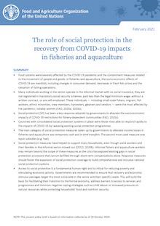
The role of social protection in the recovery from COVID-19 impacts in fisheries and aquaculture
02/2021
Food systems were severely hit by COVID-19 and the related restrictions to the movement of people and goods. In fisheries and aquaculture, the socio-economic effects of COVID-19 are manifold including changes in consumer demand, limited storage facilities, drop in fresh fish prices and stopping fishing operations.
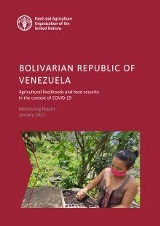
Bolivarian Republic of Venezuela: Agricultural livelihoods and food security in the context of COVID-19
02/2021
This report shares the analysis on the effects of the coronavirus disease 2019 (COVID-19) in the agri-food system in the Bolivarian Republic of Venezuela based on the assessment conducted during August–September 2020.
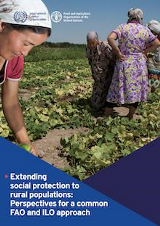
Extending social protection to rural populations
02/2021
Despite the importance of social protection, today more than 70 percent of the world’s population still has no or limited access to comprehensive social protection.
